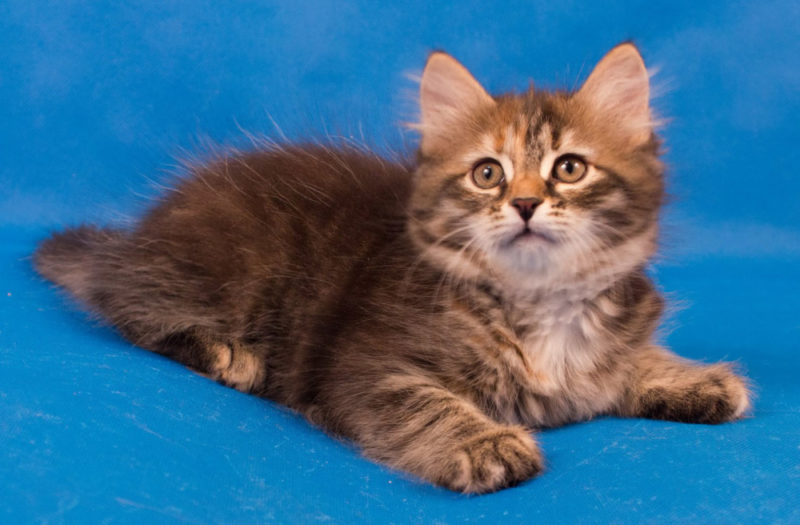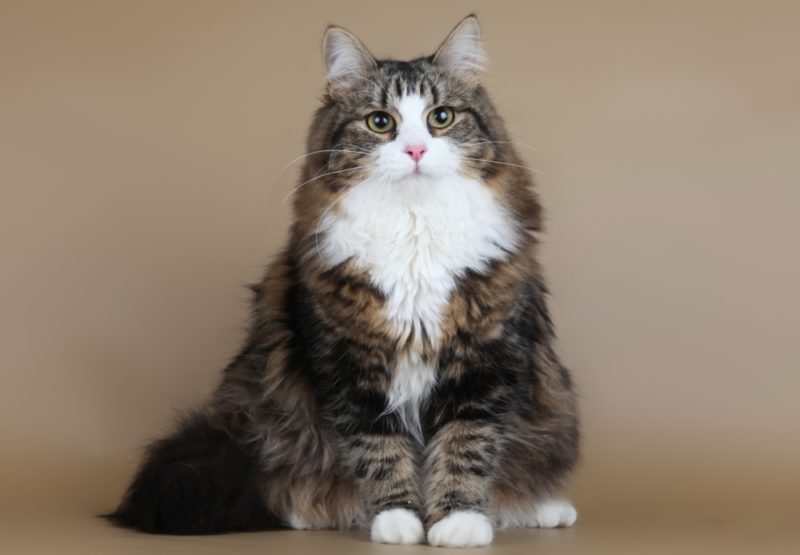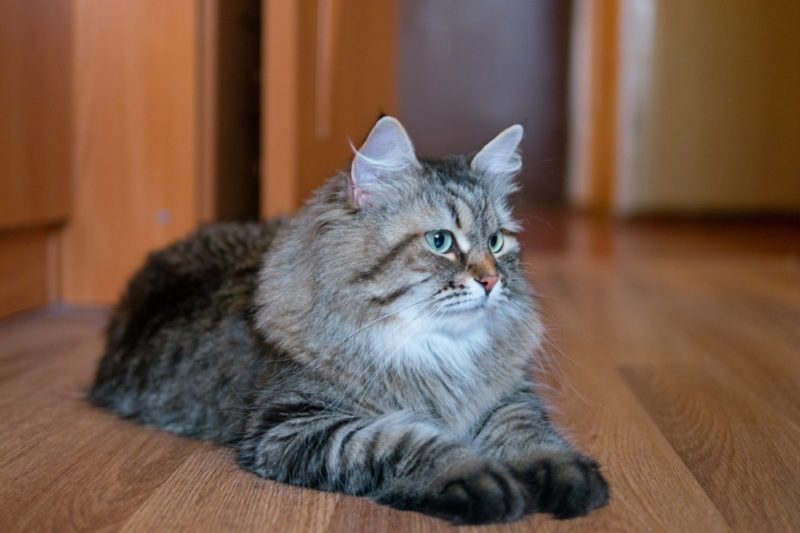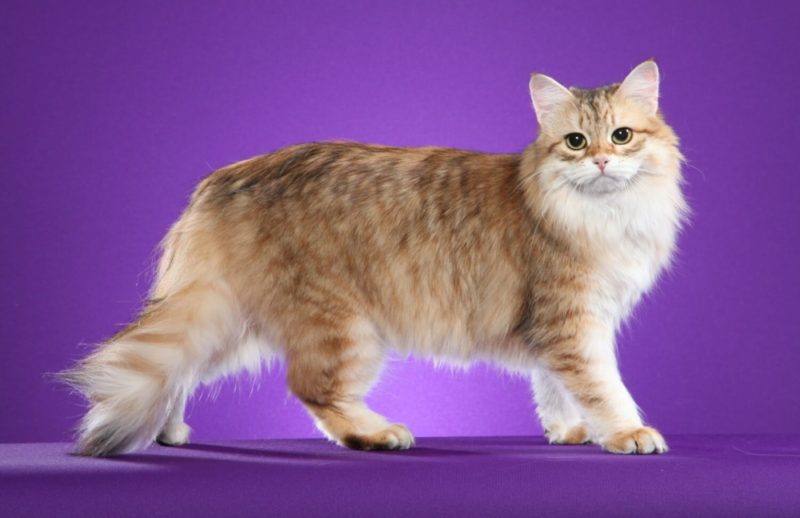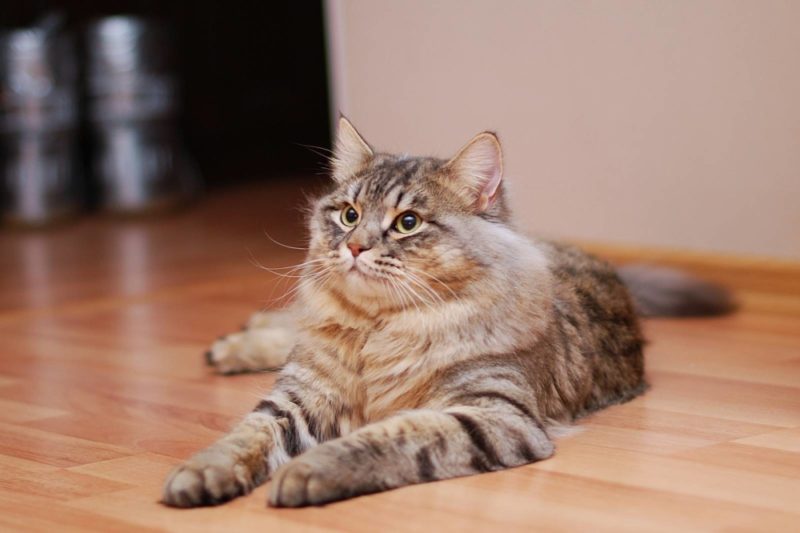Fluffy and cute Siberian kittens are growing fast. These playful lumps eventually turn into large, dignified cats and cats with a very special character and manners. How to properly care for this breed - the pride of Russian felinology, read the article.
Material Content:
Description of the breed of Siberian kittens
In adult Siberian cats, a balanced, slightly lazy character, which can not be said about kittens. They love to play and explore the surroundings. For adults, a strict, dignified look is characteristic, from which sometimes it becomes uncomfortable. Maybe that's why they inspire fear in many people. But the opinion of the fierce disposition of this breed is erroneous. Purebred representatives of the Siberians will not deprive the balance.
Description of the appearance of adult animals:
- massive, strong body;
- limbs of medium length, strong;
- medium-sized rounded eyes set wide apart;
- any coat color;
- the head is large, trapezoid;
- medium length nose;
- wide chin and rounded cheekbones;
- short neck;
- medium-sized ears with rounded ends;
- double undercoat;
- thick semi-long wool with a “collar” on the neck, fluffy tail and “panties”.
Siberian cats are loyal to their owner and are very wary of strangers, but do not show aggression. They are very smart, smart and attached to the owner. The animals themselves choose the main person in the house, and they are cool towards other family members.
Siberian cats are freedom-loving, will seek outdoor walks outside the apartment. Especially hard to keep at home non-neutered cats.They will meow loudly, mark walls and rush from corner to corner. Interestingly, Siberians are very sociable, they enjoy spending time with other representatives of their breed. Cats and cats often form a strong pair and together take care of the growing offspring.
Origin history
The first information about large cats with long hair that lived in Russia belong to the late Middle Ages. Then this breed was called Bukhara. In Siberia there lived nomads who tamed animals were kept only at monasteries or in inns. Immigrants traveling to distant lands brought livestock, cats, and dogs with them. In this area, probably, a large forest cat lived, which led a semi-wild lifestyle. Accustomed to humans, pets gradually mixed with native breed and a new type of Siberian cat was created.
In Russia, the formation of the breed occurred in the late 80s, when felinology began to actively develop.
Fans of these cute creatures participated in exhibitions, showing grown pets. Experts, assessing the appearance of animals, attributed them to pets or to representatives of the Siberian breed.
Today, Siberian semi-long-haired cats are more popular abroad than in their homeland. Our appearance of these beauties does not cause such delight as in the west. Many generations of individuals that have formed over the centuries resemble the appearance of the Siberian breed, although they do not have documents and a pedigree.
Standard and breed weight by month
Kittens of this species are large in size. They are very active, eat well and gain weight quickly. Usually from 2 to 5 kittens appear in the litter, sometimes more. The most healthy offspring are cats under the age of 5-6 years, cats can be producers up to 10 years of age.
To control the development of the baby, it is useful to know how much he should weigh.
Monthly averages:
immediately after birth - from 100 to 140 g;
- 1 month - from 570 to 670 g;
- 2 month - from 1100 to 1400 g;
- 4 month - from 2700 to 3600 g;
- 6 month - from 3200 to 4000 g;
- 8 month - from 3500 to 6000 g;
- 10 month - from 4300 to 6500 g;
- 12 month - from 4500 to 8500 g.
Cats are smaller than their partners, because they are characterized by a minimum weight value in the table. These are averaged data, the body weight of a particular individual depends on many factors: heredity, the number of kittens in the litter, nutrition and health of the mother cat during pregnancy. Adult Siberian individuals weigh from 6 to 9 kg, and their girlfriends weigh about 5 kg.
Keeping and feeding an animal
A kitten of this breed needs its own place - a warm couch, a multi-tiered game complex or a house where he can relax and retire.
The following items must be purchased:
- scratching post;
- bowls for water and food;
- toilet tray and filler;
- Toys
- clipper;
- combs and slicker.
From the first months of birth, a kitten is accustomed to hygienic procedures - cleaning ears, rubbing eyes, bathing. When the animal grows up, it will be impossible to do so. Ears, eyes and teeth should be examined periodically. Eyes can sour or watery if hair or a mote gets into them. It will help to solve the problem by rubbing them with a cotton swab dipped in chamomile broth. If the inflammation does not go away, you need to show the kitten to the doctor. Ears by ear lotion.
From 2 months you can feed a Siberian kitten with ready-made dry food of a super-premium class. It should correspond to the age category of the animal (for kittens, smaller granules and a slightly different composition). In addition to dry mixes, it is desirable to give natural products - raw chicken fillet, past 3-day freeze, kefir, fish, boiled liver or liver paste. The pellet food can be left in the baby’s bowl for the whole day, especially if everyone goes to work, and there is no one to pour food on.
Some owners prefer to use only natural food for their pet.In this case, the diet of the Siberian breed should consist of 50–70% of high-quality meat. The remaining 50-30% are divided among themselves by various cereals, vegetables, fruits, dairy products. Kittens should always have clean drinking water in the public domain. To remove wool from the stomach from 6 months, green grass is useful, which can be grown independently from wheat grains on the windowsill.
How to care for wool
Fluffy wool is not only an excellent decoration. To meet the best qualities, some attention is required. Those who hold Siberians are aware of its magical properties - it does not get dirty and almost does not stray into mats. Regular combing is needed, it is not very easy to take care of the coat, as a lot of patience is needed. In the saliva of animals, there is no special protein allergen, so touching does not cause allergies.
During molting in spring and autumn, the hair needs to be combed out daily. To do this, use a metal comb with sparse teeth, a wide brush for animals and a slicker. This must be done in the direction of hair growth. When the warlocks formed, it is impossible to cut them, you need to carefully untangle them with your hands.
If from the first months of life a kitten is accustomed to swimming, then he will not be afraid of water.
The correct execution of this procedure plays a big role:
- It is undesirable to plant an animal in a basin full of water. It is better to place the container on a rubber mat and pour water from the top of the bucket.
- The water temperature should be comfortable - about 36–38 ° C.
- If the kitten is anxious and breaks out, it is possible that the water for him is too hot or does not like shampoo.
- At first, it is recommended to bathe without the use of detergents, so that the baby gets used to the water.
If the apartment is cold in winter, the animal is not bathed, because the thick coat dries for a long time.
Life span
Siberian cats are in good health. According to the testimony of many owners, they do not suffer from diseases characteristic of other breeds, have strong immunity, and greater endurance. The average duration of feline existence up to 15–16 years is not the limit for Siberians: among them, there are often centenarians who have crossed a 20-year milestone.
Even a hardy Siberian breed needs proper care:
- Balanced and nutritious nutrition;
- deworming once every 6 months;
- vaccinations laid down by age;
- regular preventive treatment for fleas and ticks;
- examination by a veterinarian once a year.
A positive emotional attitude, understanding from the owner, also affect the life span of the pet.
Advantages and disadvantages of the breed
Good health, a strong, balanced nature of the Siberian cat and dog attachment to the owner - this is only part of its advantages. Such an animal is very beautiful and graceful, affectionate with family people and distrustful of strangers.
Other benefits:
- cleanliness;
- high intelligence;
- hypoallergenicity;
- ability to learn;
- quick adaptation to new conditions;
- sociability and loyalty to other pets.
Of course, there are individuals with a “brutal” disposition, a wild and uncontrollable character, but these are, rather, the exceptions that occur in other breeds.
Siberian cat has a great self-esteem and unique character. If you show due respect to the animal, it will reciprocate. For love and care he will thank with faithful friendship.


